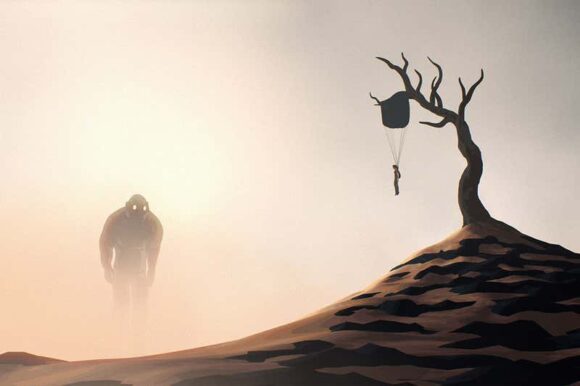Reading Alan Moore’s The Great When for the Telegraph
Londoners! There is another city behind your city, or above it, or within it. This other place, known as Long London, belongs to the Great When, a super-real realm that lurks behind your common-or-garden reality. Whenever there are shenanigans over there – caused by Jungian archetypes called Arcana, who jockey for esoteric advantage – it stirs mundane events over here. An artist-magician called Austin Spare puts it this way: “If this London is what they call the Smoke, then that place is the Fire, you follow me?” A bruiser called Jack “Spot” Comer is more forthright: “This other London, that’s the organ grinder, an’ our London’s just the fackin’ monkey.”
Sometimes one of these Arcana even stumbles from Long London into the real. In 1936, the Beauty of Riots – think Eugène Delacroix’s bare-breasted Liberty Leading the People, only 10 feet tall – finds herself picking through the battle of Cable Street. Sometimes a visit is arranged across the divide. In 1949, Harry Lud, “the red-handed soul of crime itself”, comes at Spot’s beckoning to sort out some bother with the gangster Billy Hill.
If Spare, Spot and the rest – in fact, everything I’ve written above – are unfamiliar to you, look the names up. Alan Moore obsessives, of whom there are many, will be used to how his wildest yarns emerge from the mouths of London’s more colourful historical figures. Yes, this is the oldest, cheapest trick in the arsenal of the London novelist – but, as The Great When proves, Moore keeps getting away with it.
The plot: a few years after the Second World War, underachieving Dennis Knuckleyard has been effectively adopted by Coffin Ada, the nastiest second-hand book-dealer in Shoreditch. Having accidentally purchased a book that doesn’t exist – at least, not in this realm – Dennis finds himself caught between worlds. Can he return the book to Long London and its severed, vitrine-dwelling City Heads, and maintain the wall between the realms? Will his adventures make a man of him? Will he win the favours of tart-with-a-heart Grace Shilling?
Moore’s not doing anything new here. Readers of urban fantasy – and I’m among them – have fallen or forced our way along so many Diagon Alleys over the years, have waited so very long for that bus to Viriconium, or Neverwhere, or Un Lun Dun, that it’s a wonder we have an appetite for (ahem) more. In this, the first of a promised series, what does Moore bring to what is by now a familiar itinerary? More Moore for a start, which is to say characters as if by Dickens, and set dressing as if by Iain Sinclair. It’s a heady brew. His esoteric Long London, when Dennis runs into it at last, is rendered in language so unhinged it teeters on the unreadable, so sure is Moore that the reader will be hooked. His maximalist prose isn’t for everyone. Will you join Dennis as he “glories in a robust sausage sandwich – slabs of fresh bread, soft and baked to flaking umber at the edges, soaking up the hot grease of the bangers”? I did not, though I admit that the “glossy chunks” of chip-shop cod “that slid apart like pages in a poorly stapled magazine” were nicely done.
More impressive is the control Moore has over his architecture. His straightforward story harbours a surprising degree of pathos: when the plot around the misplaced book resolves unexpectedly, halfway through, it leaves Dennis with a couple of hundred pages in which to make ordinary human mistakes, chiefly mistaking friends for enemies, and friendliness for sexual attraction. So our uncomplicated young hero grows up as kinked and keeled-over as the rest of us, while the war, long over, continues to unhinge the world, financing its criminal class and normalising its violence.
You can catch a glimpse of where Moore’s new series is going. His London is too complicated to explain simply. Simple reasons have become a thing of the past, “and we shan’t be seeing ’em again.” Magical thinking is not just possible for Moore’s characters; it’s reasonable. It’s inconceivable that the writer of the 1990s comic sensation From Hell won’t find himself wandering through Victorian Whitechapel at some point. Still, I would like to think that The Great When is edging away from Ripper territory into a wider and more generous vision of what London was, is, and may become.





